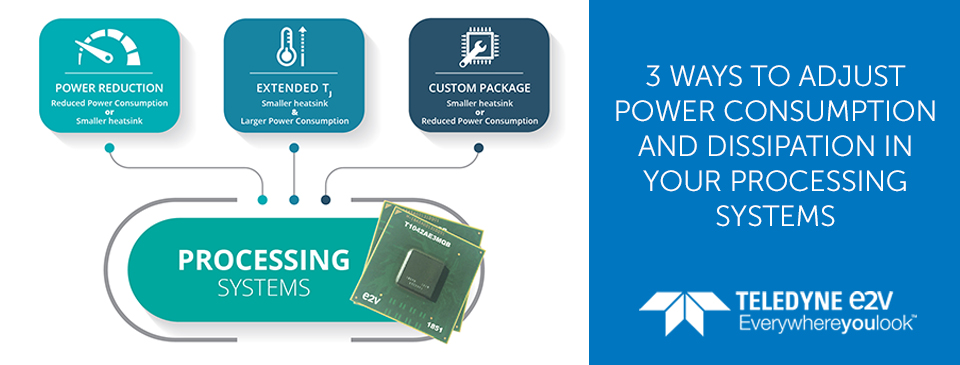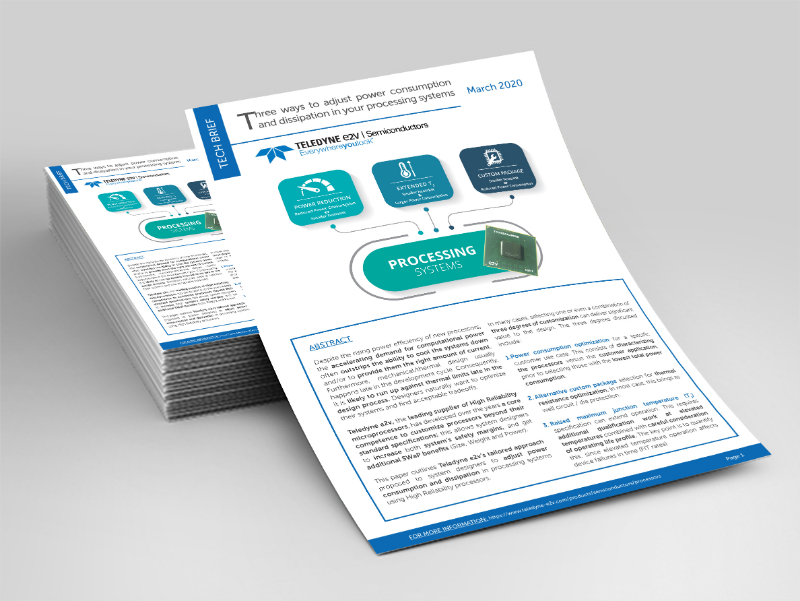
Despite the rising power efficiency of new processors, the accelerating demand for computational power often outstrips the ability to cool the systems down and/or to provide them the right amount of current. Furthermore, mechanical/thermal design usually happens late in the development cycle. Consequently, it is likely to run up against thermal limits late in the design process. Designers naturally want to optimize their systems and find acceptable tradeoffs.
Teledyne e2v, the leading supplier of High Reliability microprocessors, has developed over the years a core competence to customize processors beyond their standard specifications; this allows system designers to increase both system’s safety margins, and get additional SWaP benefits (Size, Weight and Power).
This paper outlines Teledyne e2v’s tailored approach proposed to system designers to adjust power consumption and dissipation in processing systems using High Reliability processors. In many cases, selecting one or even a combination of three degrees of customization can deliver significant value to the design.

1. Power consumption optimization for a specific customer use case. This consists of characterizing the processors versus the customer application, prior to selecting those with the lowest total power consumption.
2. Alternative custom package selection for thermal resistance optimization. In most case, this brings as well circuit / die protection.
3. Raised maximum junction temperature (TJ) specification can extend operation. This requires additional qualification work at elevated temperatures combined with careful consideration of operating life profile. The key point is to quantify this, since elevated temperature operation affects device failures in time (FIT rates).
If you wish to read more, please click on the following link to download our white paper.
Please fill out & submit the form to receive an answer from our Sales Team or Application Engineers.